 Are you launching a crowdfunding campaign?
Are you launching a crowdfunding campaign?
Want to use social media to promote it?
To reach your goals, you'll need to use social media before, during and after your campaign.
In this article you'll discover how to use social media to achieve crowdfunding success.
#1: Choose Social Channels for the Campaign
When you plan a crowdfunding campaign, focus on the social channels that will provide the most impact. To pick the right channels, consider these questions:
• On which channel do you have the most followers?
• Where do your prospects converse and share?
• What people have the greatest influence in your community?
• Which platform are you most comfortable with?

Listen to this article:
Where to subscribe: Apple Podcasts | Spotify | YouTube Music | YouTube | Amazon Music | RSS
For most crowdfunding campaigns, the right channels will typically be Facebook and Twitter, because they reach the most people and encourage the most interactivity.
But also take into account where you're most active socially and on which platforms your community is talking. Instagram is becoming increasingly popular, and LinkedIn may be more appropriate if your campaign caters to a professional audience.
#2: Select a Campaign Hashtag
Create a unique hashtag for your crowdfunding campaign and use it in all of your social media posts. This allows you to organize the posts into one topic page. With all of the conversations in one place, people can easily find them and learn more about your crowdfunding campaign.

Encourage your supporters and donors to use the hashtag as well. This helps you keep track of what people are saying about your campaign and draw in new people unfamiliar with it.
Shower Strike, a crowdfunding campaign for clean water, includes the hashtag #showerstrike in their social media posts. In addition, Shower Strike supporters and followers use the hashtag in their posts, which helps drive easier discovery on social media and more brand awareness.
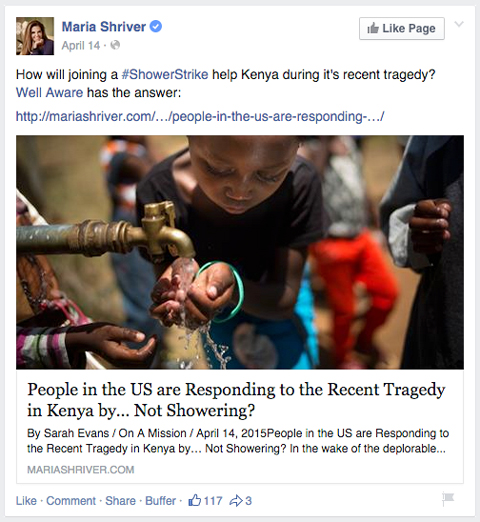
Choose hashtags that are unique, short and catchy. If you get enough mentions of the hashtag, you might even start trending.
#3: Leverage Community Through Facebook
Your community is the most powerful asset for meeting your crowdfunding goals. Your followers help you reach new audiences, drive donations and create social proof.
Get World-Class Marketing Training — All Year Long!
Are you facing doubt, uncertainty, or overwhelm? The Social Media Marketing Society can help.
Each month, you’ll receive training from trusted marketing experts, covering everything from AI to organic social marketing. When you join, you’ll also get immediate access to:
- A library of 100+ marketing trainings
- A community of like-minded marketers
- Monthly online community meetups
- Relevant news and trends updates
Rather than rely on only your existing Facebook network, amplify your reach by creating a Facebook page for the campaign.
Create a Facebook Page
A campaign-specific Facebook page is a central place to host the true believers in your community and post updates without diluting your existing brand or outreach.
The Gauntlet, a crowdfunding campaign by Mox Boarding House, created a Facebook page to engage a core group of advocates within their community.
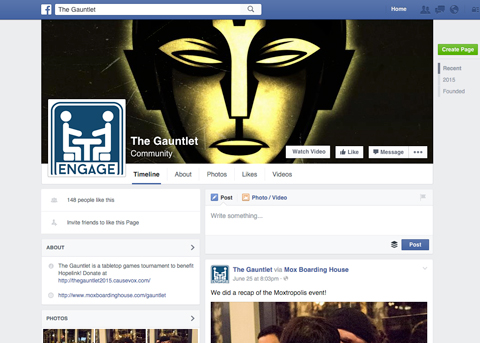
Your Facebook page can be a place to deliver campaign news to advocates and backers so they can share it, comment on it and take action. You can also share content on this page (or from this page) with your existing brand page.
If you're running a crowdfunding campaign for a personal project or you want to keep your community more private, you can use a Facebook group or event instead. A Facebook page is typically better suited for larger communities.
Explore Facebook Page Insights
Every Facebook page comes with page Insights. These analytics enable you to see the performance of your page based on likes, reach, engagement (comments, shares, etc.) and demographics.
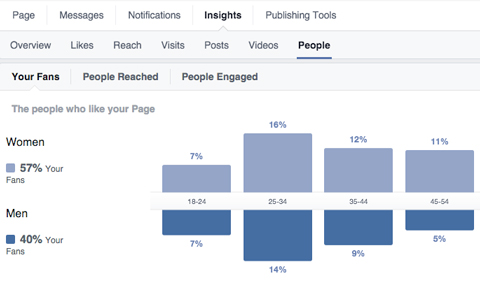
Use this data to determine what's working on your page and what you need to adjust. In addition, look at the composition of your campaign followers so that you can craft content that appeals to your demographic.
Engage With Your Audience
It's important to use a push-pull technique when creating your Facebook posts. Take the time to write engaging posts that entice your community to respond. In addition, keep pushing updates to your community. Your fans will appreciate your keeping them informed when the campaign hits important milestones, especially if they've contributed.
For example, let your community know when the campaign has reached a major funding milestone or has been featured in a prominent news outlet.
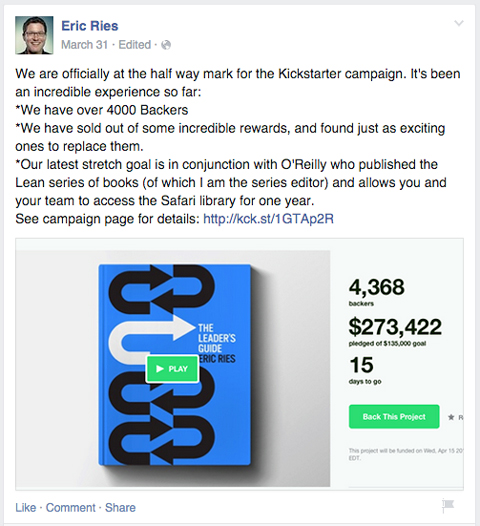
And, remember to thank your contributors. Expressing your gratitude is a great way to engage with your community and build a stronger following. Here's a thank-you post from a campaign to raise funds to build a community garden:

Boost Posts

Discover Proven Marketing Strategies and Tips
Want to go even deeper with your marketing? Check out the Social Media Marketing Podcast! Publishing weekly since 2012, the Social Media Marketing Podcast helps you navigate the constantly changing marketing jungle, with expert interviews from marketing pros.
But don’t let the name fool you. This show is about a lot more than just social media marketing. With over 600 episodes and millions of downloads each year, this show has been a trusted source for marketers for well over a decade.
If you have the marketing budget, you can also increase your Facebook reach by boosting your posts. This is a great way to reach friends of friends or people with interests related to your crowdfunding campaign.

When you boost posts, you can choose your audience (people who like your page, for example), budget (your advertising budget) and duration (the number of day to boost the post).
#4: Find the Right Content Mix
The goal of using social media for crowdfunding campaigns is to increase awareness and drive contributions to your campaign. To drive social sharing, use a mix of informative and sales-type posts.
Informative Posts
About 80% of your campaign-related social posts should educate and inform without focusing on sales. These posts help drive engagement and shares, and condition people to come back to your page for more.
If you're a product-focused crowdfunding campaign, post an interesting photo of the product being revealed. KNO Clothing, a startup that produces American-made t-shirts and contributes funds and clothing to the homeless, launched a crowdfunding campaign to launch a new line.
Here's an update they used to showcase their campaign's product.

Project AWARE is a nonprofit focused on saving and protecting the oceans. On their Facebook page, their posts feature emotive images that tie directly to their mission. In addition, the posts are newsworthy, timely and highly targeted to their audience's interests.
This post for Project AWARE's crowdfunding campaign #finathon uses humor and invites conversation to drive social sharing.

Also share stories from your supporters, like this 13-year-old who helped raise money for World Bicycle Relief's crowdfunding campaign.
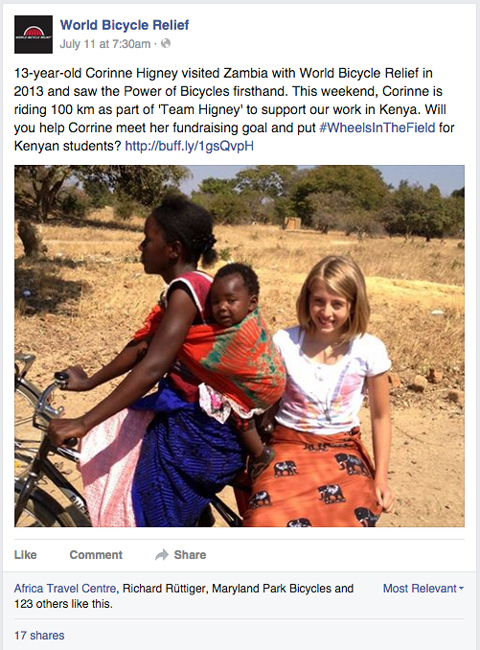
Post campaign updates, behind-the-scenes looks and impact/success stories as well. Heartwarming and inspiring posts are a great way to remind your audience why they're involved with the campaign.
Sales-type Posts
About 20% of your posts should focus on driving the user to contribute or share the crowdfunding campaign.
This post from WOD for Water, a crossfit-focused crowdfunding campaign, explains how a small $25 donation can turn into a $50 donation. The call to action helps to create a sense of urgency and drives the viewer to donate today.
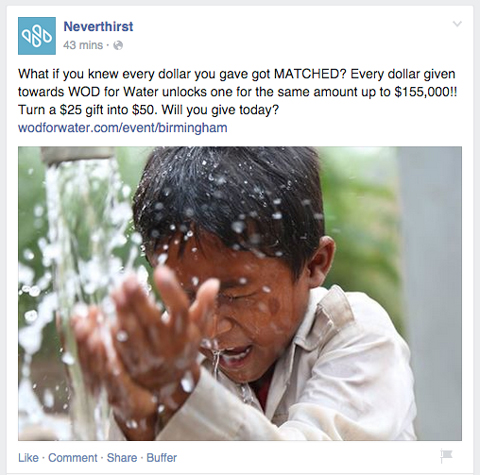
If you focus on cultivating your community, sales-related posts will likely generate strong results.
#5: Track Results and Refine Content
Rather than create a definitive social media calendar, focus on an agile approach to social media. Danielle Festa, campaign organizer for GREY2K's crowdfunding campaigns, recommends these three steps for posting content:
1. Start by creating one week of content that can be used across all of your social channels.
2. Review and monitor the performance of each social media post. On Facebook, look for shares and comments to measure engagement. On Twitter, look for mentions and retweets.
3. Based on which posts perform the best, tweak your content to get the most impact.
#6: Pitch Your Campaign to Journalists
It's important to reach out to journalists to publicize your crowdfunding campaign.
Twitter is widely used by journalists to not only share information, but also communicate with other users and find leads for stories. You'd be surprised how many published stories originate from companies pitching an idea.
Before making contact with journalists, familiarize yourself with their work and the outlets they write for. Make sure your story would be a good fit with what they've previously written. Then follow them on Twitter and try to build a relationship.
Keep in mind that most journalists have a preferred method of communication to receive pitches.

You may be able to determine this by reading their social comments and tweets or by looking at what's listed in their profile. When in doubt, use email to pitch your story.
In your pitches, keep your message short and link to your campaign or a recent story with the hashtag so journalists can find out more information about the campaign. If they don't accept DMs without following you back, tweet them and ask for their contact information.
Conclusion
Social media is crucial to the success of crowdfunding campaigns for individuals, brands and nonprofits. Focus on creating shareable content and cultivating a community on social media so you can reach new audiences. The more effectively you use social media, the more contributions, pledges and donations you'll receive.
What do you think? Have you launched a crowdfunding campaign? What strategies have worked best for you? Please share your thoughts in the comments below.
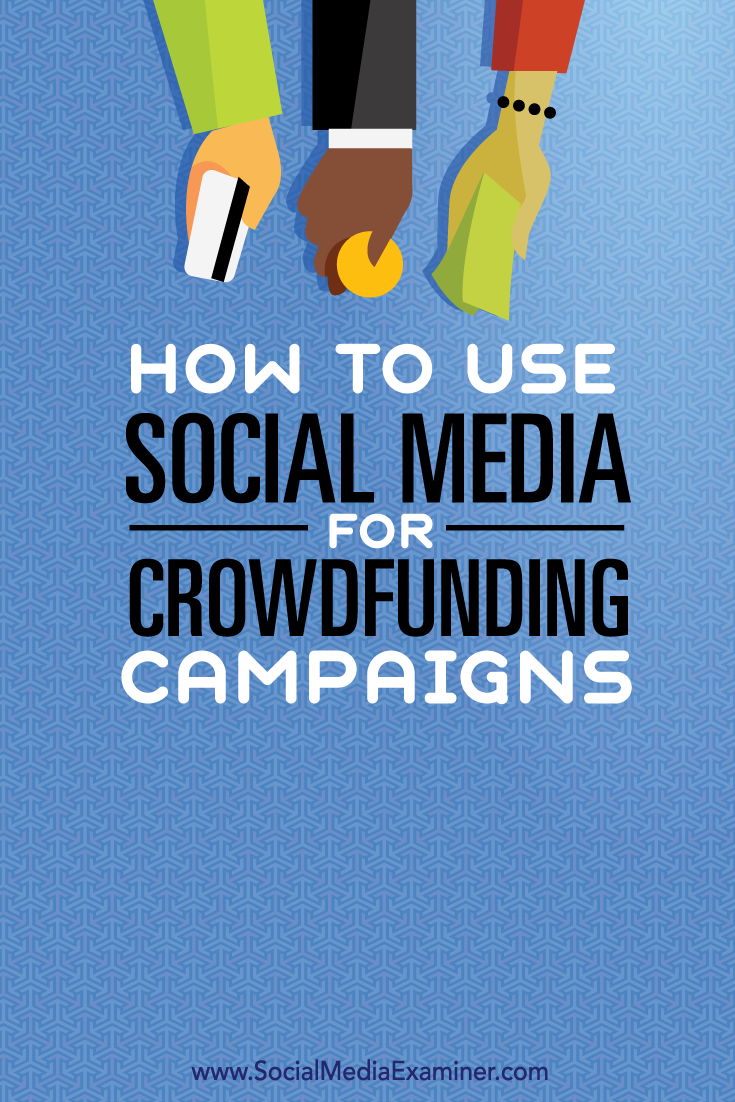
Attention Agency Owners, Brand Marketers, and Consultants

Introducing the Marketing Agency Show–our newest podcast designed to explore the struggles of agency marketers.
Join show host and agency owner, Brooke Sellas, as she interviews agency marketers and digs deep into their biggest challenges. Explore topics like navigating rough economic times, leveraging AI, service diversification, client acquisition, and much more.
Just pull up your favorite podcast app, search for Marketing Agency Show and start listening. Or click the button below for more information.

